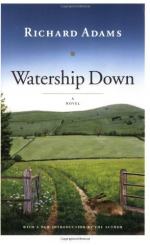|
This section contains 860 words (approx. 3 pages at 400 words per page) |

|
People have probably been telling stories about animals since time began. Some of the earliest known animal stories are the fables of Aesop, a slave who lived in Greece around 500 B.C. He told stories about animals, which had morals illustrating lessons and aspects of human life. Since then, many authors have told and written stories in which animals could speak and talk, and in which they have their own societies. Some early, and still well known, animal stories include Rudyard Kipling's Just So Stories and Jungle Book, Joel Chandler Harris's Uncle Remus stories, Kenneth Grahame's The Wind in the Willows, and George Orwell's Animal Farm. However, these stories were not realistic in the sense that they did not take into account the actual biology and behavior of the animals: the characters were basically humans in animal form.
The first realistically told animal story was Bambi...
|
This section contains 860 words (approx. 3 pages at 400 words per page) |

|




